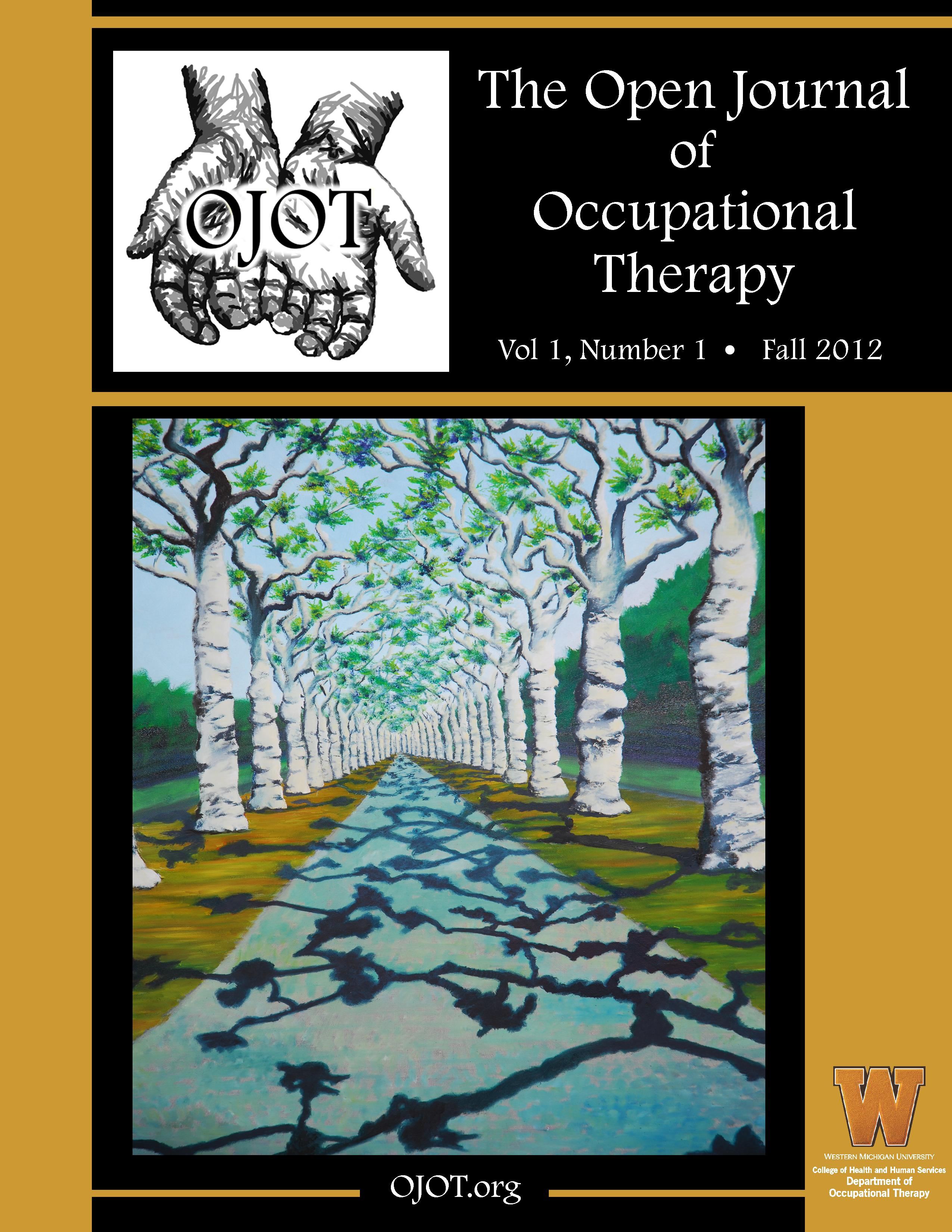ScholarWorks > HHS > OT > OJOT > Vol. 7 > Iss. 2 (2019)
Credentials Display
Sapna Chakraborty, OTD, OTR/L; Ashlea Cardin, OTD, OTR/L, BCP, CNT; Kelsey Dulin, OTS; Rachel Murphy, OTS; Haley Richardson, OTS; Makaila Schiber, OTS; Abby Taube, OTS
Abstract
Background: Research has shown constraint-induced movement therapy (CIMT) to be of benefit in pediatric occupational therapy practice to treat children with hemiplegia. The perceptions of adult clients, pediatric clients, child caregivers, and occupational therapists working with the adult population has been explored in the past. However, little is known about the perceptions of occupational therapists working with the pediatric population regarding CIMT. This qualitative study explored the perceptions of pediatric occupational therapists who had awareness of CIMT as an intervention method.
Methods: Eight pediatric occupational therapists from the Midwest United States participated in the study. Structured interviews were conducted focusing on the participants’ knowledge, implementation practices, and current perceptions of CIMT in pediatric practice. Coding and thematic analysis was used to determine themes.
Results: Three themes emerged from the data: perceived benefits of CIMT, varying comfort levels with delivery of the intervention, and differing methods of implementation.
Conclusion: This study was a preliminary attempt to understand pediatric occupational therapists’ perceptions and implementation of CIMT. Future research should expand on findings by exploring the perceptions of pediatric occupational therapists from across the country as well as adapting the interview to allow for more open-ended responses.
Recommended Citation
Chakraborty, S., Dulin, K., Murphy, R., Richardson, H., Schieber, M., Taube, A., & Cardin, A. (2019). The Perceptions of Pediatric Occupational Therapists Regarding Constraint-Induced Movement Therapy. The Open Journal of Occupational Therapy, 7(2). https://doi.org/10.15453/2168-6408.1540



Comments
The authors report that they have no conflicts of interest to disclose.